How to Turn One-Time Donors Into Repeat Donors
Note: This post was written in 2014. We’ve written more content with new research since then, including How to Get Nonprofit Software Discounts.
Nonprofit fundraising is hard. And getting donors to donate more than once isn’t easy either.
The Urban Institute found that overall donor retention rates fell to 41.5 percent in 2010-11, down from 49.6 percent in 2004-05. Asking for donations from people who have already contributed to your cause costs less than soliciting new donors—so it’s important to implement strategies that facilitate repeat donations.
Software Advice surveyed a random sample of 2,833 U.S. adults, collecting a minimum of 500 responses to each question to find that impact stories and a little old-fashioned direct mail can go a long way towards encouraging donors to give again.
Key Findings
Sixty percent of donors want impact stories to see how their first donation is making a difference.
A personalized letter is the preferred outreach method for 46 percent of donors.
Thirty-five percent prefer nonprofits wait seven months before asking for another donation.
Donors Want Impact Stories
We asked donors what types of updates they want to receive from the nonprofits they contribute to. The results underscore what we expected: a nonprofit’s level of success is a major factor in a donor’s decision to give again. Impact stories are a great way to show the good your organization is doing and proves to donors their gifts are being put to good use.
Types of Updates Donors Want to Receive
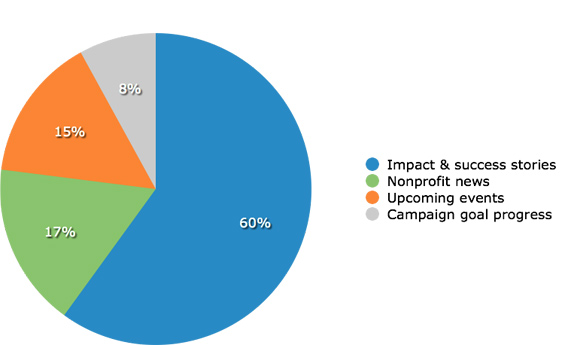
Implementing a strategy for collecting and sharing beneficiary stories with donors may be one of the best ways to allocate time when creating fundraising content. Not only do donors want proof their donation is making a difference, but potential new donors, board members, corporate sponsors and grant administrators also want assurance their contributions are well spent.
Send Donors a Letter of Thanks
No matter how large or small the donation, thanking donors for their gifts is a vital step in the donor nurturing process. We asked donors their preferred method for receiving thanks from the organizations they donate to. Living in the digital age, it’s a little surprising that the majority of donors prefer a personalized letter in the mail to other delivery methods. It’s not surprising, however, that only eight percent like to receive a phone call.
Preferred Outreach When Thanking Donors for Contributions
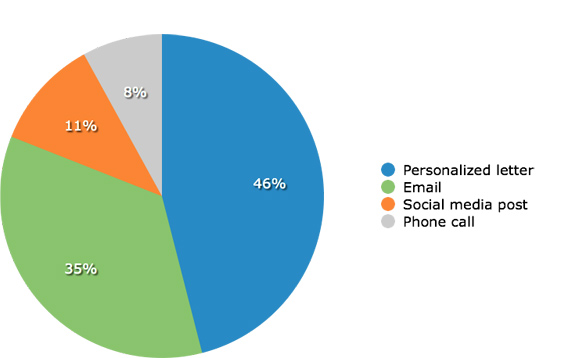
Any Type of Public Recognition Is Welcome
Respondents were evenly divided on what types of public recognition influence their decision to donate again.
Preferred Type of Public Recognition for Donation
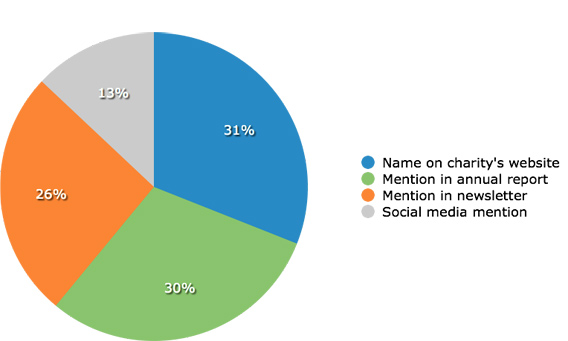
There isn’t a strong preference one way or another as to how donors prefer to be recognized by nonprofit organizations, but as of now, more traditional methods are preferred to mentions on social media channels. Whichever of these methods you choose, it’s always a good idea to publicly laud donors for their contributions.
Donors Don’t Want Payback Gifts
Sending gifts to donors as thanks or to ask for another donation is a popular tactic for some nonprofits. But is that what donors want? We asked donors if receiving a gift from a nonprofit they give to motivates them to give again. The answer is largely “no.”
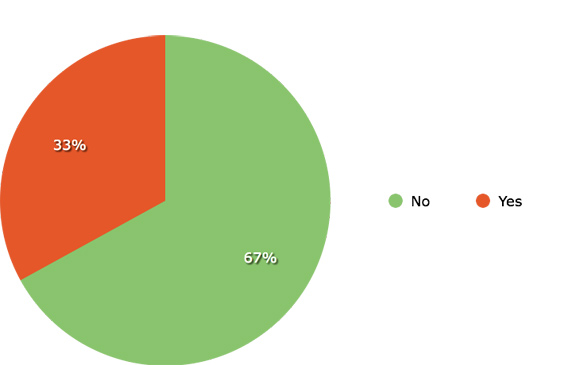
Sending donors a payback gift for their contributions is counterintuitive to the what is an altruistic practice. People choose to give because they want to do something good—not because they expect to be rewarded for the effort. In fact, a paper in the Journal of Economic Psychology describes instances where payback gifts lead to decreased donor contributions.
Wait at Least Seven Months to Ask for a Second Donation
We also asked donors to tell us how long nonprofits should wait before requesting a second donation. Most respondents think nonprofits should allow at least seven months to pass before asking for another donation.
When Nonprofits Should Ask for Another Donation
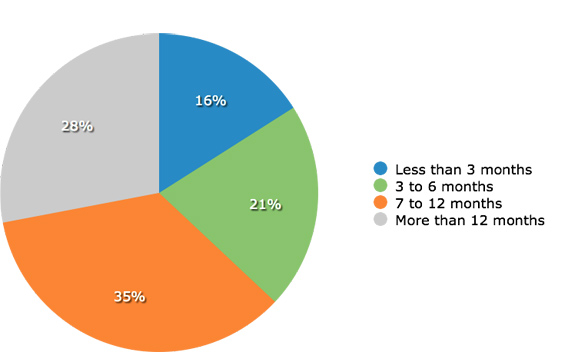
Limit the Number of Donation Requests
When does proactive fundraising turn into pestering? We asked donors how often nonprofits should ask for more donations. While a significant number of respondents said it’s not acceptable for nonprofit organizations to ask for another donation at all, an equally large number said asking only one or two more times is preferred.
How Many Times Nonprofits Should Ask for Another Donation
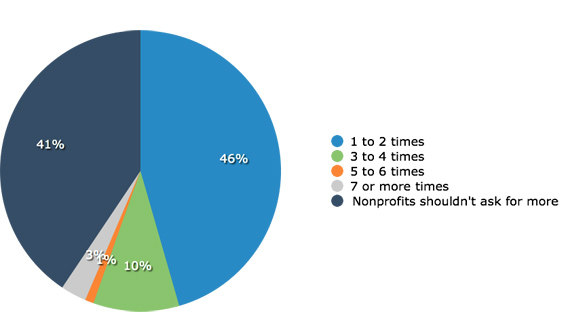
The results suggest that nonprofits that ask for repeat donations more than three or four times are at risk of becoming irritating to donors. However, even though donors feel this way, persistence may be a good strategy. The key could be determining when no means no.
Conclusion
The consensus of respondents is that nonprofits can earn repeat donations by highlighting success stories from the nonprofit’s beneficiaries. Delivering these stories in personalized letters through less intrusive methods such as mail or email is desirable. And respondents also prefer that nonprofits wait until a few months have passed to ask for repeat donations, and avoid asking repeatedly.